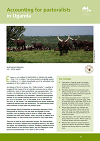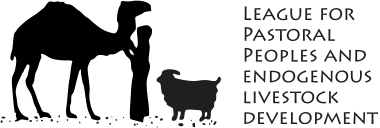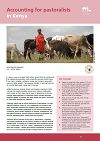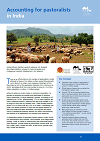Accounting for pastoralists in Uganda
Jacob Barasa Wanyama / League for Pastoral Peoples and Endogenous Livestock Development / 2020
Pastoralists in Uganda range from largely sedentary agropastoralists to transhumant herders who maintain a home base and satellite herds. Five million pastoralists in the “cattle corridor” manage 44% of Uganda’s cattle, 34% of the goats, 60% of the sheep, 92% of the donkeys, and 98% of the camels. They produce milk, meat, honey, beeswax and skins. Annual direct benefits from livestock are worth US$ 299 million. About half comes from milk, 25% from sales of animals and meat, and 25% from use of livestock as insurance and credit. Pastoralist areas in the south and north have great potential for tourism. Ankole cattle are a national symbol and tourist attraction.
No official definition for pastoralists exists, and official surveys do not use “pastoralism” as a category. This makes it difficult to estimate the significance of pastoralism. National data collection should categorize production systems as pastoralism, agropastoralism and farming based on clear definitions.

Download document


